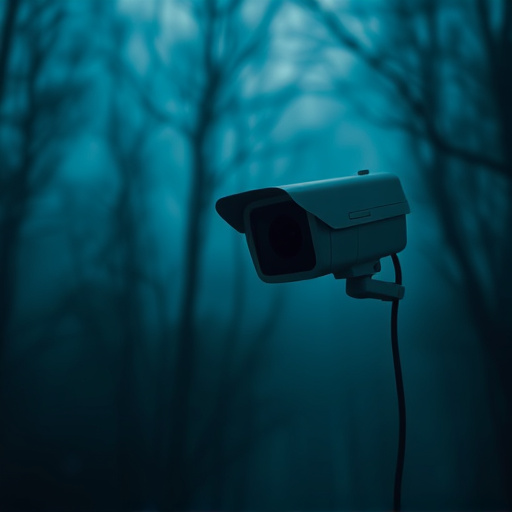Spy cameras with remote viewing technology offer advanced covert recording capabilities through everyday items like pens and smoke detectors. Legal considerations vary globally, with strict regulations on surveillance; explicit consent is often required. Discreet placement techniques aid in ethical evidence collection while respecting privacy rights. Law enforcement uses advanced detection technologies to combat these stealthy tools, raising ethical concerns about invasion of privacy and potential misuse of footage. Awareness about right to privacy and ethical boundaries surrounding spy cameras with remote viewing is crucial.
“Uncover the intricate world of covert recording equipment, where technology meets discretion. This comprehensive guide explores the art of deploying spy cameras with remote viewing capabilities for surveillance purposes. From understanding the legal boundaries and ethical dilemmas to mastering placement techniques and detecting hidden devices, we delve into the intricacies. Learn how advanced users navigate this landscape, ensuring maximum stealth while uncovering vital information. Prepare to explore a world where every angle is considered.”
- Understanding Spy Cameras and Remote Viewing
- Legal Considerations for Covert Recording Equipment
- Discreet Placement Techniques for Maximum Stealth
- Advanced Detection Methods and Countermeasures
- Ethical Implications and Privacy Concerns
Understanding Spy Cameras and Remote Viewing
Spy cameras, also known as hidden cameras or surveillance cameras, are a sophisticated tool for covert recording. These devices are designed to be concealed within everyday objects, making them nearly impossible to detect. They come in various forms, from tiny cameras disguised as everyday items like pens, keys, or even smoke detectors, to more advanced models capable of remote viewing via smartphone apps.
Remote viewing is a key feature of many modern spy cameras. This technology allows users to monitor live feeds or access recorded footage from a distance, often using secure internet connections. Spy cameras with remote viewing capabilities offer unparalleled discretion and accessibility, making them popular choices for surveillance in both personal and professional settings.
Legal Considerations for Covert Recording Equipment
When placing and using covert recording equipment like spy cameras with remote viewing capabilities, it’s paramount to understand the legal considerations involved. The legality of such devices varies significantly across jurisdictions, with many countries having strict regulations regarding surveillance and privacy. In some regions, covert recordings are only permitted in specific circumstances, such as for security or business purposes, and with explicit consent from individuals being monitored.
Violation of these laws can result in severe penalties, including fines and imprisonment. It’s crucial to consult local legislation and seek legal advice before deploying any spy camera equipment. Additionally, ensuring the device is not easily detectable helps maintain legality and ethical standards, respecting the privacy rights of all parties involved.
Discreet Placement Techniques for Maximum Stealth
Discreet placement is a key aspect of covert recording, ensuring evidence is collected without raising suspicion. Skilled investigators employ various techniques to position their equipment stealthily. One popular method involves utilizing everyday objects as cover. For instance, a small spy camera with remote viewing capabilities can be disguised as a pen or a common household item, allowing for unobtrusive monitoring.
Another technique is integrating recording devices into infrastructure. Micro cameras can be built into light fixtures, electrical sockets, or even painting, making them nearly invisible. These methods are particularly effective in high-traffic areas where constant surveillance might go unnoticed without the right equipment.
Advanced Detection Methods and Countermeasures
With advancements in technology, detecting covert recording equipment has become a complex task. Modern devices like spy cameras with remote viewing capabilities have made it easier for unauthorized individuals to capture sensitive information without detection. However, law enforcement and security professionals have also adapted their methods to counter these stealthy tools.
One of the most effective countermeasures is utilizing advanced detection technologies. Thermal imaging, for instance, can identify heat signatures from electronic devices, helping to locate hidden cameras. Radio frequency (RF) detectors can pick up on the signals emitted by certain spy cameras, while specialized software can analyze video feeds for suspicious patterns or anomalies indicative of covert recording. Additionally, regular physical inspections and random checks in high-risk areas can deter potential intruders who rely on such equipment.
Ethical Implications and Privacy Concerns
The placement and detection of covert recording equipment, such as spy cameras with remote viewing capabilities, raise significant ethical implications and privacy concerns. The very nature of these devices allows for secretive surveillance, often without the knowledge or consent of individuals being recorded. This invades personal privacy and can lead to a chilling effect on free expression and behavior. In many jurisdictions, there are strict laws in place to regulate the use of such equipment, including requirements for clear notification when recording is taking place and limitations on where they can be placed.
Ethical considerations also extend to the potential misuse of recorded footage. Even if placement is legal, the content captured could be used maliciously or without consent, leading to further privacy issues and even reputational damage. The availability of spy cameras with remote viewing capabilities necessitates a heightened awareness among individuals and organizations alike about their right to privacy and the ethical boundaries surrounding surveillance technology.
The strategic placement and detection of covert recording equipment, such as spy cameras with remote viewing capabilities, demand a delicate balance between security measures and ethical considerations. While advanced detection methods exist to combat these devices, their discreet placement techniques ensure maximum stealth. However, it’s crucial to navigate the legal landscape surrounding these tools, respecting privacy while adhering to relevant laws. Ultimately, understanding the implications of covert recording equipment is essential for both individuals seeking security and society at large to maintain a healthy balance between surveillance and personal privacy.
